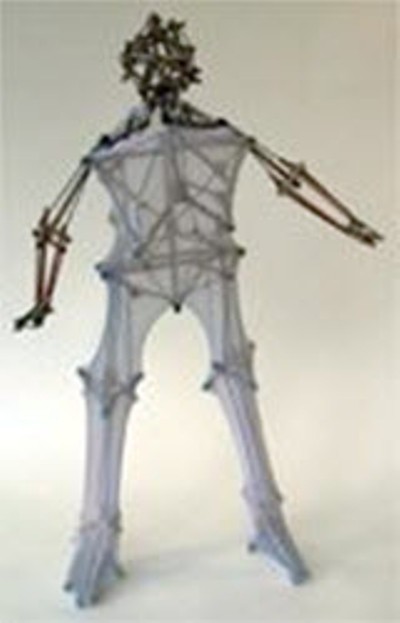The final of a 3 part series on Function. I could write a 10 part series, but I will save you all the boredom!
So… we’ve discussed what Function isn’t. So how do we create it? What are the parts involved?
Without plunging deep in the proverbial ‘rabbit hole’ we will keep it simple.
I’m going to argue the following
Structure Dictates Function! Most of us have heard and/or used this before. Its been a mantra of mine since I first graduated Chiropractic school. Not until recent did I truely understand what 10% of this means.
The Structure: primarily starting with the Pelvis. (Without making this into an anatomy lesson, I will attempt to make this brief and poignant)
- Based upon Tensegrity = Force of Compression (using bones) combined with Tension (using ligaments and fascia)
copyright T. Flemons 2006 www.intensiondesigns.com
Therefore… The pelvis is literally the ‘center’ of the balance of the entire Tension and Compression (tensegrity) system!
Specific Example. Scapula is directly influenced by the Pelvis via 1 direct link! How is that? Simple. Latissimus Dorsi (lat) is continuous with the thoracolumbar fascia which is connected directly to the pelvis (1). Continuous with the Latissimus Dorsi is LeBlanc’s Fascia, which connects directly to the scapula.
What does that mean for a patient or athlete? A pelvis that is not properly balanced will directly cause a shoulder issue (of many varieties; labrum tears, tendonitis, impingement, scapula dyskinesis, etc)
The basic KINETIC CHAIN theory that we have all learned or heard about, needs some clarifications. Mainly that the CHAIN is not the ‘shin bone connected to my thigh bone’ approach, but better explained…’the shin bone is held in relationship to my thigh bone via a vast complicated network of fascia and ligaments and muscles’ AND the mechanics of the knee (joint between the shin and thigh bones!) is NOT ONLY determined by the bony interface, but also highly influenced by the tension in the system in the anterior, posterior, medial and lateral sides (to simplify)…
This explains many more complicated interactions of the body that Dr Guy Voyer has been introducing to many Therapists, Doctors and High Level Trainers in the US and Canada. If the structure isn’t properly balanced and mobile, proper Function isn’t achievable.
So if you’ve given up on your Shoulder, Lowback, Neck, Headache Pain OR you are desperately trying to get your 95mph fastball back, 4.1sec 40…or …. Give us a call and find out exactly the disturbance in your Tensegrity system that is causing your pain!
In Health
Jason Amstutz DC, RTP, CCSP, CSCS
Somatherapy and Somatraining Student of Dr Guy Voyer.
DrAmstutz@LINKMedicalCenter.com

